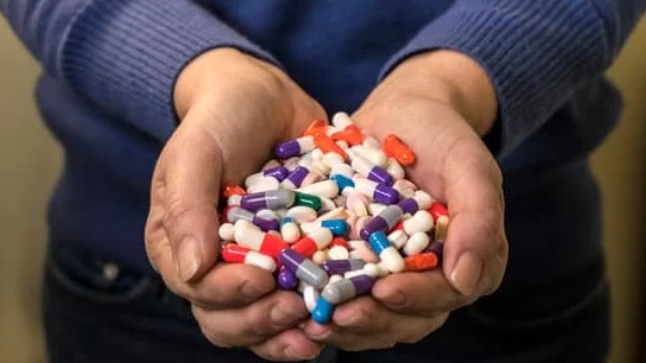
Drug overdose rates in Georgia do not remain constant throughout the year.
Evidence from emergency department surveillance shows suspected nonfatal overdose visits likely increase during late spring and summer months, with the most pronounced elevations typically occurring between May and August.
This article explains what drives seasonal overdose Georgia patterns, how state health officials track monthly changes, and what these fluctuations mean for communities across the state.
Understanding Seasonal Overdose in Georgia
Monthly fluctuations in overdose events follow predictable patterns shaped by drug supply dynamics, social behaviors, environmental conditions, and health system access. Georgia participates in the CDC’s Drug Overdose Surveillance and Epidemiology system, which provides near real-time data on suspected nonfatal overdose emergency department visits updated monthly. This surveillance infrastructure enables public health officials to detect seasonal trends and respond to emerging threats before they escalate.
The state’s overdose landscape has changed dramatically since 2019. Fentanyl now accounts for roughly 64 percent of all Georgia overdose deaths, fundamentally altering risk patterns compared to earlier years when heroin and prescription opioids dominated. National analyses covering October 2020 through April 2025 found that fentanyl-involved nonfatal overdoses surpassed heroin by February 2023 and showed relatively higher counts in summer months despite overall trends. Georgia’s participation in federal surveillance networks means these national patterns provide important context for understanding local monthly changes.
How Georgia Tracks Overdose Seasonality?
The Georgia Department of Public Health publishes monthly syndromic overdose reports that document emergency department visit rates, county-level patterns, demographics, and substance-specific indicators. These reports have included detailed substance breakdowns since 2021 and explicitly note surveillance limitations to guide appropriate interpretation. Monthly reporting allows health districts, coalitions, and law enforcement partners to see changes as they occur rather than waiting for annual summaries.
Georgia’s surveillance relies on electronic health records from emergency departments across the state, typically covering more than 90 percent of facilities. Data becomes available within one to two months, making this the fastest way to detect seasonal peaks. The system tracks eight overlapping categories including all drugs, all opioid, fentanyl, heroin, all stimulants, cocaine, methamphetamine, and benzodiazepine overdoses. Because a single visit can appear in multiple categories, health officials analyze each syndrome independently rather than adding counts together.
Summer Peaks Drive Seasonal Overdose Georgia Concerns
Multiple data streams point to elevated overdose activity during warmer months. National syndromic surveillance covering 46 states showed consistent summer elevations in suspected overdose emergency department visits, with the highest rates typically recorded in July and August. While temperature alone does not cause overdoses, summer brings overlapping risk factors including increased social gatherings, festivals and travel, physiological stress from heat, and shifts in drug supply chains that may alter potency or contamination patterns.
Georgia’s climate makes these summer dynamics especially relevant. Extended periods of high heat and humidity can affect how people use substances, where they use them, and whether bystanders are present to respond when overdoses occur. Public spaces see more activity during warm months, which may increase the likelihood that overdoses are witnessed and that emergency services are called. The state’s position as a transportation hub along Interstate 75, Interstate 85, and Interstate 20 also means drug supply patterns can shift seasonally as trafficking routes respond to travel and commerce cycles.
Recent provisional data suggest Georgia experienced nearly a one-third decline in opioid overdose deaths from 2023 to 2024, a substantial improvement attributed to expanded naloxone access and coordinated public health responses. However, this overall decline does not eliminate seasonal peaks. Emergency department visits may still rise during summer months even when annual death totals improve, underscoring the need for sustained vigilance during traditionally high-risk periods.
Why Seasonal Overdose Trends in Georgia Counties Vary?
Not all Georgia counties follow identical seasonal patterns. Urban counties with higher population density and more robust surveillance participation provide clearer monthly signals, while rural counties may experience more volatile month-to-month changes due to smaller numbers and episodic supply disruptions. Fulton, DeKalb, Cobb, and Gwinnett counties historically show the highest overdose counts, but rates per population can be elevated in smaller counties such as Richmond County.

County-level mortality data from the National Center for Health Statistics suppress counts between one and nine to protect privacy, which can make monthly seasonal analysis difficult in lower-population areas. However, Georgia’s emergency department surveillance system aggregates data by county of residence when possible, offering better resolution for tracking seasonal changes across the state. Health districts use these county breakdowns to identify local spikes that may require targeted interventions, such as counterfeit pill warnings or naloxone distribution campaigns.
Cluster Events and Seasonal Context
Some monthly spikes reflect clusters rather than broad seasonal trends. Georgia has experienced sudden increases tied to batches of counterfeit pills or unusually potent fentanyl-contaminated substances. The state’s Drug Surveillance Unit has strengthened partnerships with law enforcement, including the Georgia Bureau of Investigation Fusion Center, to rapidly detect and respond to overdose clusters. During these events, internal syndrome reports are shared with affected health districts and community coalitions, often within hours of detection.
Distinguishing seasonal patterns from clusters requires comparing monthly rates to historical baselines for the same months in previous years. If June 2025 shows a 30 percent increase over June 2024 and June 2023, that suggests a true seasonal or trending increase. If the spike is confined to a single county or a brief two-week period, it more likely reflects a localized product contamination event. Both patterns matter for public health response, but they call for different interventions.
Fentanyl Dominates Georgia’s Overdose Landscape
Fentanyl’s takeover of Georgia’s drug market fundamentally reshaped overdose seasonality. Unlike heroin, which showed gradual declines in emergency department visits nationally, fentanyl-involved visits increased steadily and remained elevated even as some other drug categories plateaued. This shift matters because fentanyl is far more potent than heroin, increasing the risk of fatal overdose from small dosing errors or unexpected contamination in stimulants and counterfeit pills.
Syndromic surveillance data are more sensitive than hospital discharge records for detecting overdose visits, especially for stimulant and all-drug categories. A comparison across 14 states from 2018 to 2019 found that syndromic data captured 67.8 percent more all-drug overdose visits and 78.8 percent more stimulant-involved visits than discharge data, while discharge data captured 18.9 percent more heroin-involved overdoses. This difference affects how quickly public health officials can spot monthly changes and respond before patterns worsen.
Polysubstance Use and Seasonal Risk
Many overdoses involve multiple substances. Fentanyl increasingly appears in drugs sold as stimulants, counterfeit prescription pills, and even cannabis products. This adulteration means people who do not intend to use opioids face unexpected overdose risk. Seasonal gatherings, festivals, and social events where drug use may increase can amplify the danger, particularly if users are unaware their substances contain fentanyl.
Georgia’s surveillance system has documented increases in stimulant-related overdoses that respond to naloxone, a strong indicator of fentanyl contamination. Public health messaging during summer months now emphasizes fentanyl test strips, naloxone availability, and the dangers of counterfeit pills. These campaigns aim to reach people before seasonal peaks rather than reacting after overdoses climb.
Georgia’s Data Systems for Monitoring Monthly Changes
Understanding seasonal patterns requires multiple complementary data sources. Each system offers different strengths, timeliness, and limitations that shape how Georgia tracks and responds to monthly fluctuations.
| System | Update Frequency | Best Use | Key Limitation |
| DOSE Syndromic ED | Monthly | Detect seasonal peaks and clusters | Non-mutually-exclusive categories; some months suppressed |
| Hospital Discharge | Annual | Validate annual burden | Eight-month lag after year-end |
| Vital Statistics | Monthly | Contextualize fatal outcomes | Twelve-month windows smooth seasonality |
| Georgia DPH Reports | Monthly | Communicate trends to partners | Represents subset of total ED visits |
The syndromic emergency department data serve as the primary engine for detecting monthly changes. Because this system updates within weeks and covers the vast majority of Georgia facilities, it provides the earliest warning when overdose visits begin climbing. Annual discharge data from the CDC’s hospital and inpatient system validate whether observed seasonal peaks translated into higher yearly totals and help assess the full scope of overdose-related healthcare use.

Fatal overdose data come from the Vital Statistics Rapid Release provisional system, which reports twelve-month-ending counts that smooth out month-to-month variation. These overlapping windows make it difficult to isolate specific monthly seasonality, but they show whether years with pronounced summer emergency department peaks also saw higher overall death rates. Comparing June-to-June endpoints rather than adjacent months provides the clearest view of trends.
Timeliness Matters for Seasonal Response
Speed determines whether data can guide proactive interventions or only document what already happened. Georgia achieved median data availability within about 34 hours in its state syndromic system and 45 hours in the national system, supporting near real-time monitoring. This timeliness enables health officials to detect a July surge by early August and adjust naloxone distribution, public messaging, and outreach efforts before the peak subsides.
Annual data with an eight-month lag cannot inform immediate responses but remain valuable for evaluating whether seasonal interventions succeeded. If Georgia implements enhanced summer naloxone campaigns in 2025 and the following year’s discharge data show reduced summer hospitalization rates, that suggests the strategy worked.
Practical Responses to Seasonal Overdose Georgia Trends
Knowing that overdoses likely peak in summer allows Georgia to pre-position resources rather than react after crises emerge. Public health districts can expand naloxone distribution to parks, festivals, and community centers starting in May. Law enforcement and public safety agencies can coordinate messaging about counterfeit pills and fentanyl risks during periods when social gatherings increase. Treatment programs can anticipate higher demand for services and ensure adequate capacity.
Georgia’s monthly reporting framework supports this proactive posture. By publishing data within weeks and sharing internal alerts during clusters, the state enables local coalitions to adjust their activities seasonally. Some districts have begun integrating overdose surveillance with environmental indicators like heat indices, following models used in other states to track heat-associated hospital visits alongside drug-related emergencies.
Year-Round Vigilance Remains Essential
Seasonal patterns do not mean overdoses only happen in summer. Fatal and nonfatal overdoses occur every month, and episodic clusters can strike at any time of year. The goal of understanding seasonality is to sharpen prevention efforts during predictably higher-risk periods while maintaining baseline interventions throughout the year. Georgia’s strengthened data linkages between prescription monitoring, overdose fatality reviews, and emergency department surveillance support this sustained attention.
The recent decline in overdose deaths demonstrates that coordinated action works. Expanded naloxone access, medication treatments for opioid use disorder, harm reduction services, and cross-agency collaboration have saved lives. Sustaining these gains requires adapting strategies to the rhythms of risk, including seasonal fluctuations that shape when and where overdoses occur.
Moving Forward With Seasonal Insights
Georgia’s participation in federal surveillance systems, combined with robust state monthly reporting and cross-agency partnerships, provides the infrastructure needed to detect and respond to seasonal overdose patterns. Evidence from multiple data streams converges on a consistent finding: suspected nonfatal overdose emergency department visits likely increase during late spring and summer months, with the most pronounced elevations occurring when fentanyl-involved overdoses coincide with seasonal risk factors.
Public health officials, treatment providers, harm reduction programs, law enforcement agencies, and community organizations can use this knowledge to time interventions more effectively. Pre-positioning naloxone, intensifying public education campaigns, coordinating festival and event outreach, and ensuring treatment capacity during peak months can reduce preventable deaths and help more people access recovery services when they need them most.
Seasonal awareness complements but does not replace the fundamental components of overdose prevention: accessible evidence-based treatment, widespread naloxone availability, harm reduction services, trauma-informed care, and ongoing support for people in recovery. By aligning these core strategies with the seasonal rhythms of overdose risk, Georgia can build on recent progress and create a more responsive, effective prevention system for all communities.
If you or someone you care about is struggling with substance use, help is available now. Thoroughbred Wellness & Recovery offers comprehensive dual diagnosis treatment in Marietta and Cartersville, with 24/7 support and evidence-based care tailored to your needs. Call today to start your journey toward lasting recovery.









